Enab Baladi’s investigation team
The recent Afrin military operations have reopened a door that the Syrian media have been painstakingly trying to close. “Hate” manifested itself in the speeches of Syrian journalists again and accusations have again started to flow from supporters of both sides of the conflict. Hence, social media websites have been turned into platforms for exclusion and the expression of a state of ideological fundamentalism, which has been embodied by media professionals and writers from across the spectrum of Syrian society.
Despite the efforts that local media have been relentlessly doing to combat the “hate discourse” in the media, this professional self-discipline is still going through a state of fluctuation over sensitive issues and changes. This requires a new stand, which would prevent the media from falling back to the pitfalls of lack of experience, inability to reconcile “freedom of expression” and “social responsibility”.
Unprofessional Journalists
The differing attitudes towards the battle of Afrin have engendered an unbalanced discourse among Syrian journalists who abandoned the profession’s ethics to adopt the views military and political formations and groups employing concepts and terminology that have been introduced for the first time according to what Enab Baladi has observed. Meanwhile, other local media outlets have maintained a certain degree of self-control concerning this operation.
While journalists working in local and international media kept repeating terms such as “potato revolutionaries”, “hired mercenaries “, “Dawaech” and “chicken thieves” on Facebook to describe the fighters of the Free Army and their supporters or those who believe in the Syrian revolution, responses of intellectuals and media professionals have emerged from the other side describing People’s Protection Units (Kurdish) and its national Kurdish affiliates as “atheists”, “infidels”, “yellow Dawaesh” and “terrorists”. Protesters kept uttering the name of former Iraqi President Saddam Hussein, who has been accused of committing war crimes against the Iraqi Kurds, and took a position on a national claim that this land is Arab and must return to its owners.
Positions were not limited to dubbing the other with ready-made stereotypical terms and images only, but expanded to circulate video recordings reminiscent of violations of the military parties on both sides, and call for revenge without distinction between a civilian and military officer.
These recordings include the Free Army’s fighters mutilation of the body of the fighter Barin Kubani, which is a case that has aroused widespread controversy in Syria, with recordings of the execution of 140 units of the Free Army and of how they proudly exhibited their corpses in the streets of Afrin, in addition to other videos depicting Units fighters on civilians on a national basis and the execution of an unidentified person in Deir ez-Zor with DShK machine gun.
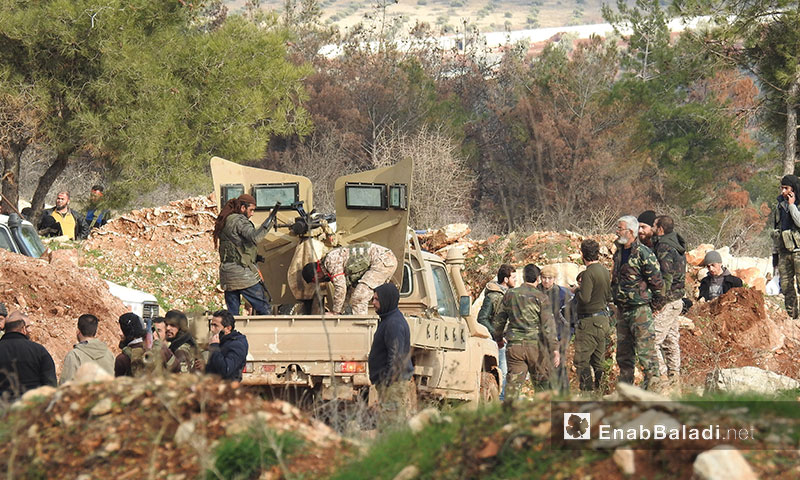
Preparations of the Free Army for a battle in the vicinity of Afrin area in Aleppo countryside – February 2, 2018 (Enab Baladi)
Mass Media: A well-studied Vintage Point?
However, the local media, despite indications of a biased and manipulative coverage of events to serve the point of view of the party to which it is affiliated, did not follow the behavior of independent journalists or consolidate these arguments, and the above-mentioned terms did not appear even in editorials.
Newspapers and magazines with offices in Turkey or affiliated with the Syrian opposition either ignored or understated the Kurdish forces’ operations. Although they tried to adhere to “balanced coverage” in each news flash separately, the headlines showed the coverage of the progress of Turkey-backed “Free Army”.
These media used technical terms for the military operations such as “the battle of Afrin, the Turkish operation, the Turkish intervention in Afrin …”
They did not overlook the civilian victims who were affected by the fire of the attacking forces, the violations and the international and human rights reports that document what they are suffering, nor did they fail to report violations against them or to call for their protection.
The vintage point from which the media affiliated to the Kurds in Syria covered the conflict focused on rejecting Turkish intervention, using even bolder and more biased terms such as “Turkey’s war on Afrin, the Turkish occupation, the Kurdish resistance.”
It also focused in its coverage on the “units” operations, their attacks, and the victims among the Turkish forces and the “Free Army”. It also focused on the movement which refused to intervene in Afrin and Al-Jazira region and the civilian casualties killed during the operations.
In addition, it tried, clearly, to mobilize the arguments and international and regional positions which rejected the operation and colored the report with one single color: that of its rejection of the operation.
Regime Uses “Propaganda” to Win Public Opinion in Afrin
Afrin moved away from the coverage of the Syrian regime’s media in the past years, and the way this media’s behavior changed towards it, which was simultaneous with the start of the Turkish army’s operation, was a “milestone” that raised many questions about the regime’s aim.
The media coverage was not limited to the regime media only, but the media of the parties that support it and are affiliated to the Lebanese Hezbollah and others funded by the Iranian government, including Al Mayadeen, Al-Manar, Al-Kawthar TV and Al-Ahed channels, which deployed its correspondents in Afrin during the first days of the fighting, and began to provide direct news coverage on a daily basis.
The coverage concentrated on civilians. The regime’s media tried to focus on the daily life of the local population and the damages they had to suffer, in addition to adopting the military view of the Kurdish fighters in the region by denying the information transmitted by the Turkish media and the sources which speak on behalf of the Free Army factions.
Moreover, it focused on special interviews with civilians in the street who were asked about the military operations which “specifically targeted civilian homes, which in turn resulted in the exacerbation and deterioration of the humanitarian situation,” according to its coverage.
It is a surprising step on the part of the regime which may be understood as an attempt to turn public opinion against Turkey and in its favor, with which it collides over more than one issue. This might bring more profit to the regime without any military costs.
The regime also wanted to prove itself as an appropriate military and administrative force in Afrin in case the Kurdish fighters withdrew from it, or to confirm the information previously presented about an agreement that could lead to its entry into Afrin and having its control, using terms such as “the people resist in the city” and “the brutal Turkish aggression.”
“Wars have never been fought separately from the media, but the latter was an active player in them, by mobilizing public opinion and providing moral support for the fighting teams on the ground. The relationship between the two has often remained so tight.
The use of media in wars partly shows in “propaganda” that leads to the mobilization of public opinion on a particular issue through exaggeration and lying in the presentation of the case to gain support.
In his book Media Control, Noam Chomsky says that the first government propaganda campaign of the modern era was during the administration of Woodrow Wilson, who was elected President of the United States of America in 1916, according to an electoral program entitled “Peace without victory.”
This was in the middle of the First World War. At the time, US citizens were completely peaceful and they thought there was no reason for them to get involved in a European war. The Wilson administration had engagements in the war, and so it had to do something about it. Thus, the administration established a Committee on Public Information called the “Creel Commission”.
In six months, the committee succeeded in turning peaceful citizens into citizens who had “the thirst for war, the desire to destroy all that is German, to fight and save the world.”
“Professionalism, Humanitarianism and Courage “Major Tools to Check the “Discourse of Hate” towards the Events of Afrin
The battle of Afrin brought back to the forefront media clashes between supporters of the two sides of the conflict. Some of the Syrian media outlets transformed into areas where to express abstract personal views and platforms for leveling accusations, surpassing recent attempts to reduce the “the discourse of hate” in the media and raise professional standards.
The “shock” the Syrian media had to endure at the start of the battle might have limited the study of coverage policies in relation to this issue, a trap that many Syrian journalists are still trying to overcome.
However, the changes in the Syrian file and its complexities must be reflected in the behavior of Syrian journalists who were born into this conflict, despite attempts by the Syrian media to escape towards professionalism and discipline in media discourse, in the interest of the target audience.
According to the Egyptian media expert Yasser Abdul Aziz, the Syrian media system is only a reflection of the prevailing conditions on the ground and in the community, and accordingly, “we cannot think of the possibility of a rational, balanced, and sensible media performance in keeping up with events that are violent, tragic, serious, and crazy .”
The Lebanese journalist, Muhannad al-Haj Ali, supports Abdul Aziz’s opinion. He considers that “the media cannot distance itself from the public polarization of the Syrians, both popularly and politically. When there are major regional forces pushing for escalation, the Syrian media does not have the financial autonomy or logistical capabilities that shall make it possible to refrain from being subjective.”
Al-Haj Ali believes that the role played by Turkey, which leads the battle of Afrin, is mainly related to the media escalation taking place. “Today it hosts the largest number of Syrian refugees and it has the keys to the factions inside Syria, in addition to sponsoring opposition councils, how can we expect media independence with all this power while Turkey is engaged in a war that could change its destiny? If the institution tries to be objective, individuals will blindly follow the official discourse. ”
Journalist Muhannad al-Haj Ali links the ethnic composition of some Syrian military groups to the increase of hate discourse in the media. “Syria’s democratic forces, Turkmen factions and Arab factions have been formed on ethnic and sectarian grounds, and their rhetoric is not expected to be patriotic.”
However, Yasser Abdul Aziz blames the “easily manipulated” media which surrender to the ethnic arguments that the parties of the conflict in the field use. He says that “this is partly due to the patterns of ownership and control of editorial policy on the one hand, and the immaturity of practice, the lack of evidence and established standard rules in the fledgling industry “.
Professional Bravery Test
The “rapid shock of variables” governs the performance of the Syrian media and makes it subject to extremely complex humanitarian, military and political storms. However, some professional mechanisms can push the Syrian media away from the reverberations of these variables.
Journalist Muhannad al-Haj Ali believes that “the objective criterion of evaluation in this case is our humanitarianism which shows in our profession,” and considers that “bravery” is required to cover the violations of other parties if they occurred, and this is through a conscious language and accurate referencing of sources that shall exempt journalists from any risk.
However, to achieve this level of professionalism, it is necessary to focus on building the foundations and standards of the media industry, according to the expert Yasser Abdul Aziz, who confirms that the Syrian media still needs training, constructive partnerships and partnerships with prestigious and mature international institutions.
According to Abdul Aziz, the Syrian media also need highly professional mechanisms to document evidence, credible community organizations and research centers that assess practices and monitor abuses.
In addition, “getting to the steady professional stage presupposes building a system of social and moral accountability to highlight the sins of incitement to hatred, discrimination, fabrication and systematic distortion.”
“The Public is looking for Truth”
The Syrian public today controls the media content industry largely through social media and news transmission on the ground, which makes the journalist’s job more accurate and in need for balanced while dealing with different perspectives towards and subjective visions of current events.
As a result, many Syrian media outlets have turned to serve the public’s wishes rather than their priorities, hence making sensitive coverage even more vulnerable, such as covering the events of the battle of Afrin .
“Succumbing to the wishes of the public may lead us to submit pornographic material or publications of hatred and racism, and ignoring them may take what we produce to the museum,” said Yasser Abdul Aziz.
“Our role is to understand the public’s priorities and address them according to industry considerations, and among those considerations are criteria that the whole world agreed on to prohibit violence, hatred, discrimination, fabrication and distortion of facts.”We must not follow the wishes of the public and we should not ignore its priorities. At the same time, we must defend industry standards.”
Al Haj Ali, however, points out that despite the fact that the public is often directed by media, political and religious orientations , they always look, whenever there is any escalation, for institutions that are independent and objective in their coverage of the events as they try to understand what is happening on the ground.
“Trust in the media is cumulative,” said Muhannad al-Haj Ali, which means that objectivity, though unpopular, is a key circle in a long-term strategy to build credibility.
Four Battles in Syria Fueled the Hate Discourse
Local Syrian media report complicated war incidents and complex battles in Syria, which has contributed to transforming Syria’s differences into a conflict scene. Thus, the discourse of hate has been widely conceived to create a social rift in more than one incident.
Focusing on the idea of fueling the hate discourse between the Arabs and the Kurds in Syria, Enab Baladi inspects four battles in which the Syrian public has witnessed the promotion of such discourse, from the latest to the earliest war.
Battle of Afrin
The battle of Afrin started on January 20, 2018, during which the Turkish army and the Syrian Free Army factions controlled dozens of areas from different axes. However, the Kurdish People’s Protection Units that control the area consider the operation which Turkey code-named as “Operation Olive Branch” as an “occupation” and reject it.
The battle was followed by an escalation in the hate discourse between the Kurdish and Arab citizens on the basis of ethnic belonging. The most prominent incident that reinforced this was the video which showed the body of a Kurdish fighter being mutilated by members of the Free Army, which raised wide controversy, and dozens of journalists commented on it.
Battles of Raqqa
On October 20, 2017, the Syrian Democratic Forces took full control over the city of Raqqa. Along with the declaration of its control, the city witnessed the raising of the photos of the Kurdish leader Abdullah Öcalan and the flag of the People’s Protection Units, while flags of the Arab factions that participated in the operation were absent. This raised angry reactions of activists in social media websites.
The clashes witnessed violations by the Kurdish forces, which activists documented, against the Arab citizens in the region, despite the calls of the Syrian Democratic Forces to the people with its Arab, Kurdish, Turkmen and Syriac components to united action for the rehabilitation and reconstruction of the city and its countryside.
The hate discourse was fueled by the Syrian Democratic Forces’ denial of the violations human rights organizations have documented.
The Battles of East Euphrates in Deir ez-Zor
The battles in eastern Deir ez-Zor coincided with the battles of Raqqa, and witnessed almost the same circumstances in terms of violations against the Arab citizens, which was reflected on social media websites after the documentation of each video or incident by activists in the region.
Although some Arab tribes cooperated with the People’s Protection Units against ISIS, other tribes complained of ill-treatment and documented abuses in more than one area during the battles.
Four-Month Kobanî Battles
On January 26, 2015, the People’s Protection Units took full control of the predominantly Kurdish town of Kobanî (Ayn al-Arab) in eastern Aleppo on the borders with Turkey, after nearly four months of battles against ISIS in the city and the surrounding villages.
ISIS entered the city in August 2014, and was expelled in January 2015, under the support of the international coalition aircrafts and Peshmerga forces from the Iraqi Kurdistan region, in addition to combatants from the Syrian Free Army.
Widespread violations have been attributed to the military forces during the battle, and it was said that they affected the Arab citizens in particular, while some considered that they were carried out against Arab and Kurd civilians.
At that time, the People’s Protection Units were accused of preventing the entry of Arab civilians to Kobanî and some neighboring villages, and “reluctance” to remove the mines ISIS left from areas rather than others.
How do the Syrian people see the Role of Local Media?
In a poll which Enab Baladi conducted on its website about how local media has covered the battle of Afrin and its role in promoting the hate discourse that followed the battle, most respondents considered that the media played a role in increasing hatred between Arabs and Kurds.
More than 350 people participated in the poll, and the question came as follows: “In the media coverage of the battle of Afrin, to what extent did the local media contribute to fueling the hate discourse among the Syrians?”
65% of the poll respondents saw that the local media contributed to increasing hatred between Syrian Arabs and Kurds, especially against the background of the events of Afrin and the surrounding charges of treason, racism, sectarianism and violation of human rights, as well as the issue of mutilation of bodies on which media coverages have differed.
Mazloum Kholo, a poll participant, considered that regardless of the role of the media in promoting hate discourse, a good number of the media in the Middle East are politicized for specific parties’ interests and do not have credibility, as he put it.
He added that “Whether politicized or not, media in the Middle East is not credible, as each channel serves the interests of specific countries, and there are few neutral and independent channels.”
35% of the respondents said that the local media did not have any impact on fueling the hate discourse while covering the battle of Afrin, considering that “hatred already exists in the Syrian people’s lives.”
“We are not experiencing any shortage in hatred, thank God, for already no one can stand the other,” said Somar Nassar, commenting on the poll which was published on Enab Baladi’s Facebook page.
Some tried to shun the answer and give an implicit answer, blaming the media for promoting hate discourse. Ibrahim Samo Mohammed commented on the poll by saying: “Ask yourselves.”

Mohammad Al Abdallah, Executive Director of The Syria Justice and Accountability Centre (SJAC) in Washington
Syrian Media and the risk of crime
Mohammad Al Abdallah
Unfortunately, most journalists and even non-Syrian media did not deal objectively with the issue of the mutilation of corpses, neither morally or legally. This was clear during the news coverage, most recently about the Kurdish fighter in Afrin and the categorical political polarization and the division that is based on backgrounds that are irrelevant to the ethics of the profession or honest press coverage.
Media that supported the military operation in Afrin were inclined to mitigate the crime of mutilation, to try to doubt the events and facts, or to even play on linguistic interpretations of the term ‘mutilation’. We noticed that some of them were inclined to falsely deny the incident altogether.
On the other hand, we noticed that the media that rejected the military operation have covered the incident and portrayed it as the daily context of the events during the battles, or as if the violations are committed by only one party.
The media or citizen journalists did not refrain from publishing videos because they were horrible, or because their publication does not go along with the profession’s ethics, nor to avoid causing further provocations. On the contrary, the incident was politically exploited in a hideous manner that did not respect the victims’ dignity and the morals and customs of the region’s citizens.
The problem in itself goes beyond the mutilation incidents or individual violations, the most important matter lies in the blind bias of the media for a certain party, whether on an ethnic, intellectual or regional basis, and the involvement of some media in covering, justifying or denying violations, or even worse, contributing to ethnic and religious propagandas in the media which accompany the military operations.
The Syrian media or the region’s media in general became a biased partisan media in a blatantly exposed manner, which falsifies the facts and does not care about the consequences, depends on antipathetic news coverage charged with incitement and demonization of the other party. The division and political and intellectual mobilization is justification enough for what the media coverage has reached in terms of selectivity. Thus, you would notice that only one party covers Afrin’s battles and focuses on it, while another ignores the coverage by focusing on the attacks on Ghouta and Idlib with violent Russian raids, and only few media professionals or human rights activists who would cover all the events in a balanced way.
There is no doubt that the two factors of fear and personal integrity can be understood, which may prompt media or human rights activists to exercise some kind of self-censorship over their words, for personal safety or the safety of their families, or perhaps because they live in an area controlled by a faction or party that does not favor their media coverage, or rather deals with a different point of view in terms of a security threat.
The “professional security” factor cannot be ignored also, meaning that any media professional might immediately lose his/her job in case s/he deviated from the negative coverage provided by the media outlet s/he works in. Thus, you can notice that some journalists, who are known for their objectivity and sensitivity, either fail to resist or engage in media coverage which lacks professionalism, and some of them chose to remain silent and avoid participation.
As I mentioned earlier, this strategy consisted in “escaping” from the trouble by covering other events, no less important than what happens in Afrin, to avoid covering sensitive and complex details.
Media or journalists can be criminalized as individuals and even media outlets in specific cases, under laws, most notably incitement to genocide, which is a crime under international criminal law.
This is applicable whether the genocide is complete or incomplete, given the gravity of any public calls for violence and hatred against certain groups, and the serious influence they might effect in inciting dissension within society.
The Statute of the International Criminal Court (Rome Statute) indicates that incitement to hatred is clearly a crime. In addition, the International Criminal Court of Rwanda has sentenced three of its local media leaders to charges of direct and public incitement to genocide.
One of the most important of the court’s decision in the so-called “media outlets’ case” is that the court said that the media’s ability to create and destroy basic human values is accompanied with a great sense of responsibility, and those who control media outlets are responsible for their consequences.
In short, media coverage which is characterized by taking revenge from another party or demonization and encouragement of killing him constitute crimes that can be prosecuted before international courts.
More dangerously, they contribute to the disintegration of society and to the strengthening of social rifts in a way that makes it very difficult to recover and return back to normal. This situation cannot be remedied by any court. Media professionals should therefore be aware of the magnitude of the damage, which may be caused by provocative news coverage that encourages revenge or retaliation.
This document has been prepared by Enab Baladi in collaboration with Arta FM radio.
if you think the article contain wrong information or you have additional details Send Correction
النسخة العربية من المقال
-
Follow us :











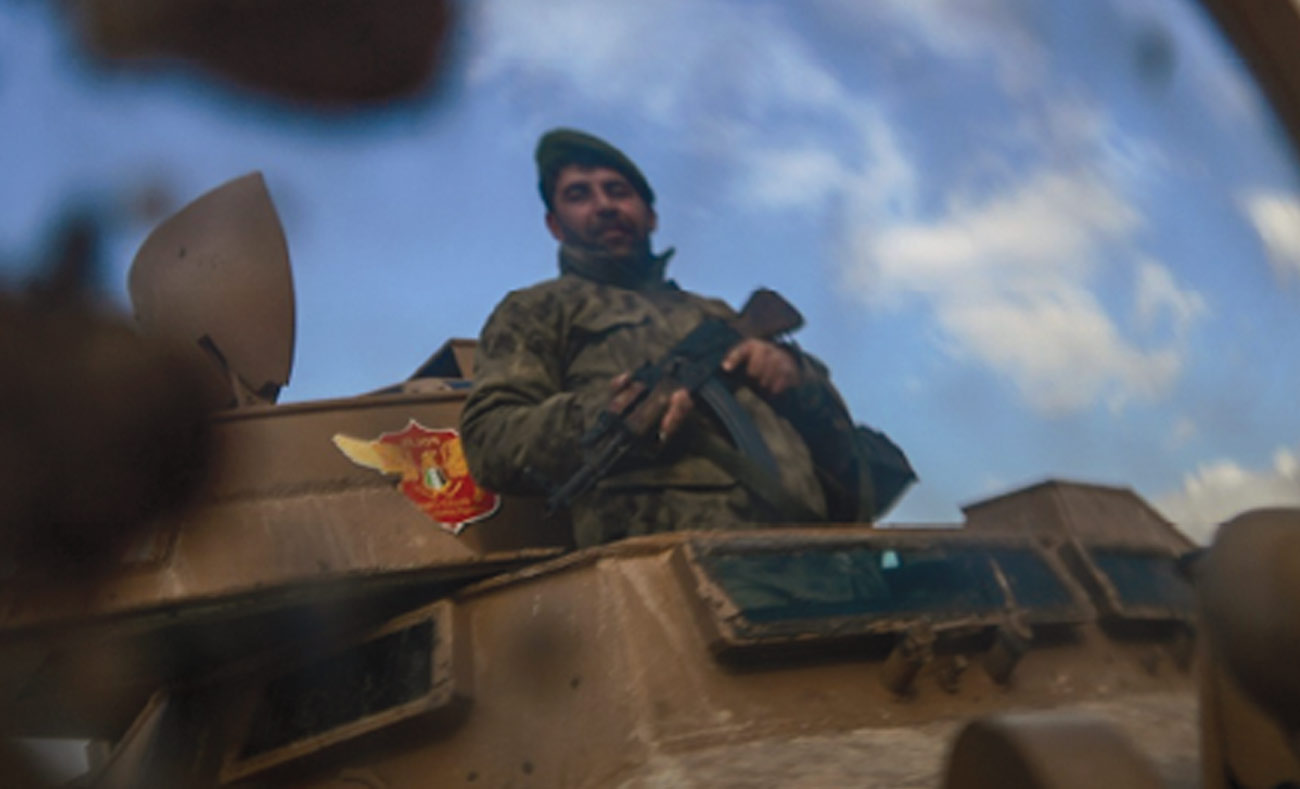
 The reflection of the image of a fighter in the Syrian opposition backed by Turkey in the city of Azaz in northern Aleppo - 27 January 2018 (AFP)
The reflection of the image of a fighter in the Syrian opposition backed by Turkey in the city of Azaz in northern Aleppo - 27 January 2018 (AFP)





 A
A
A
A
A
A

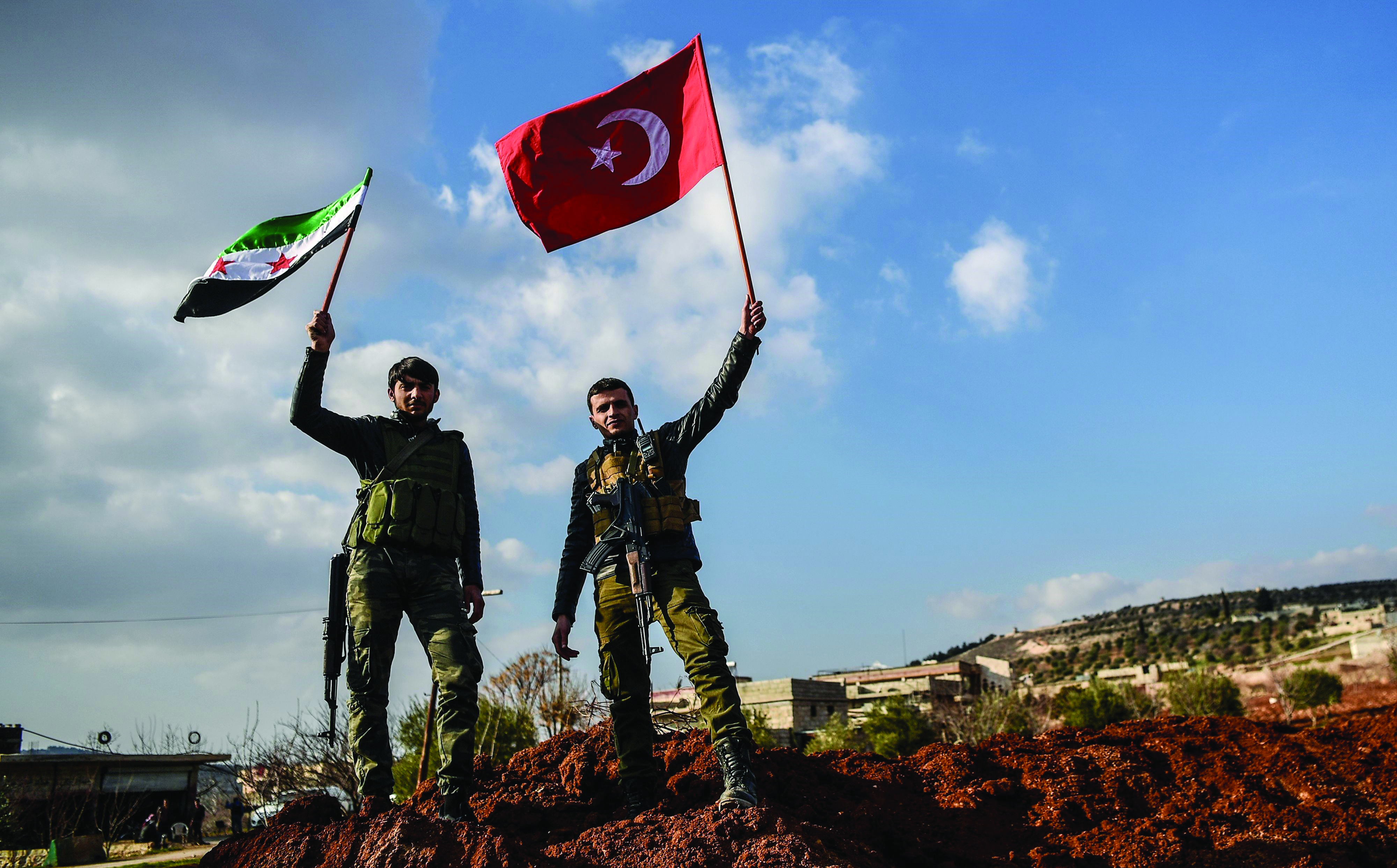
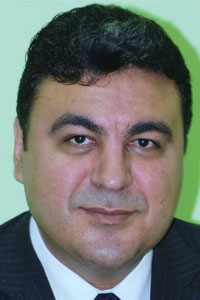



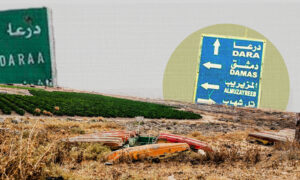

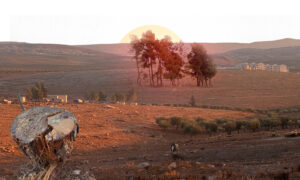
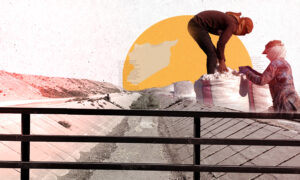

 More In-Depth
More In-Depth